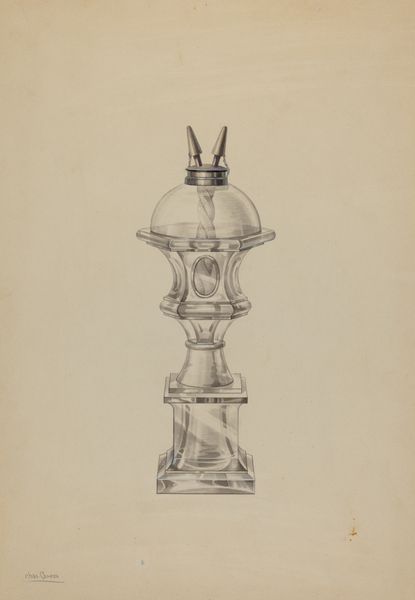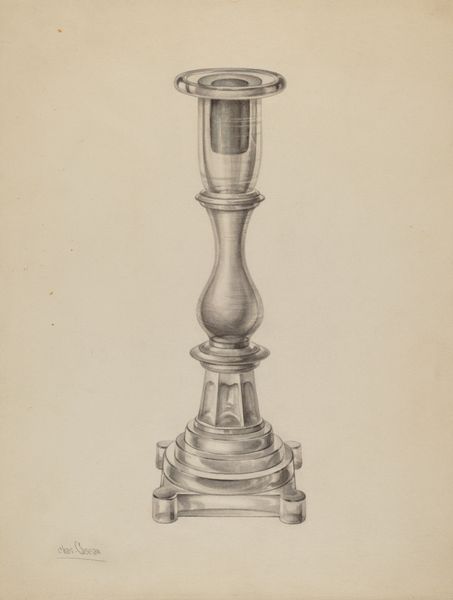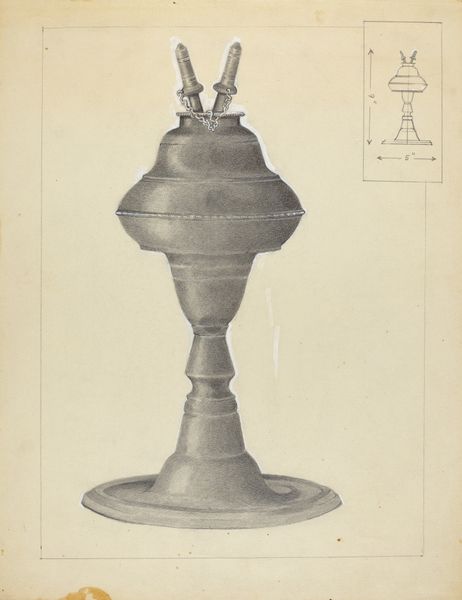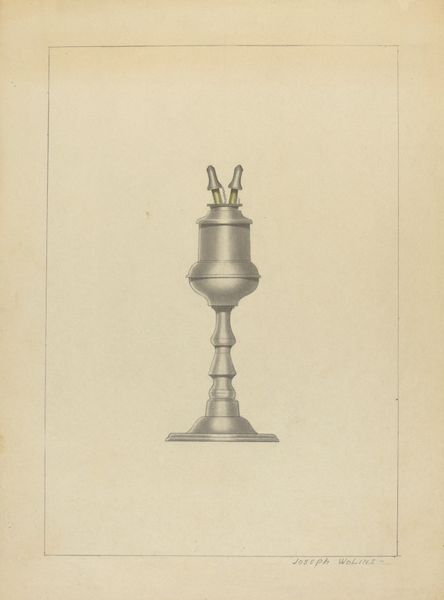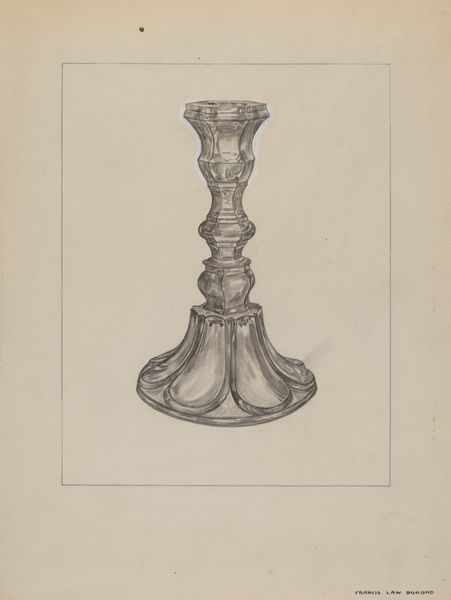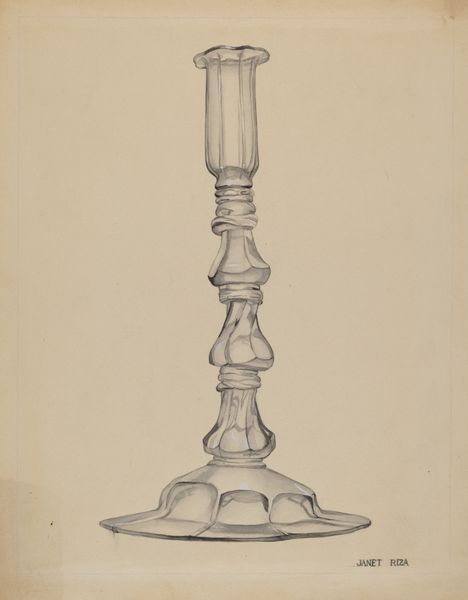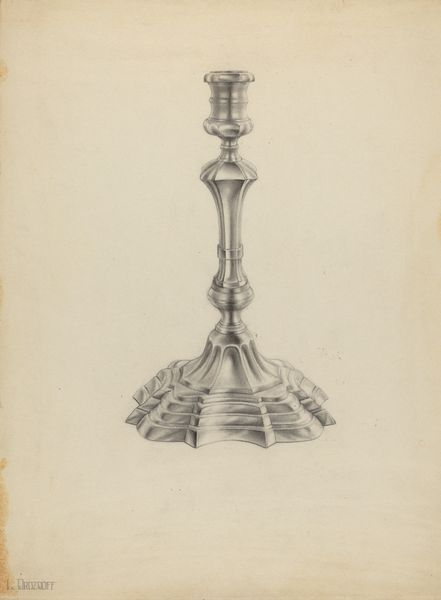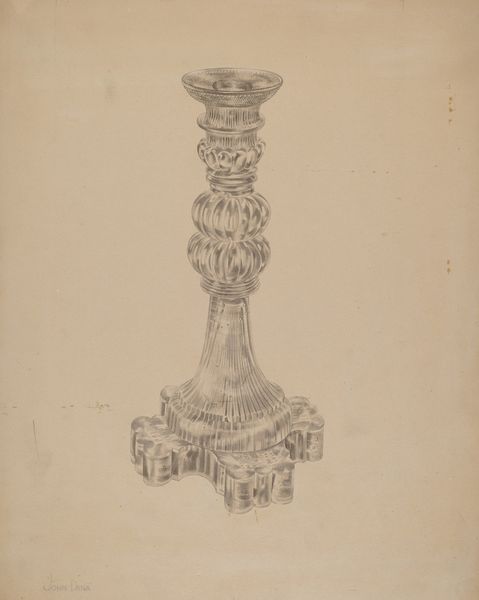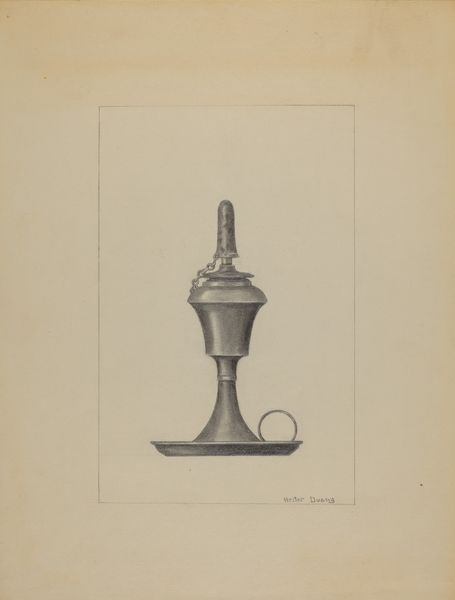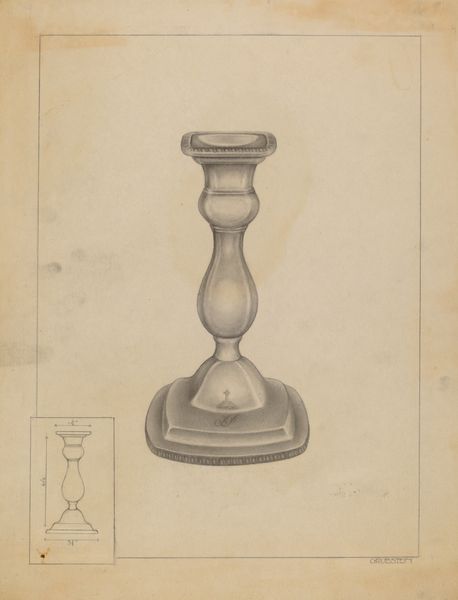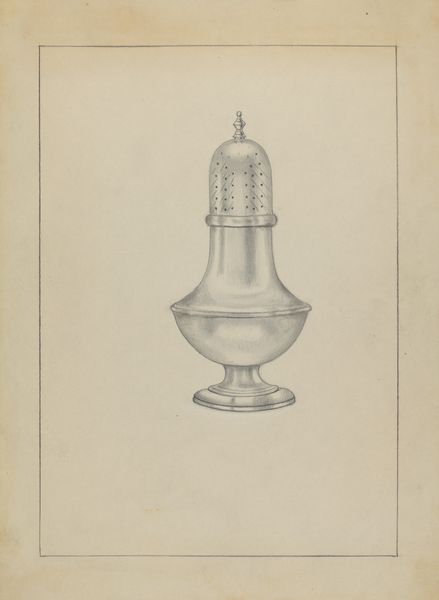
drawing, pencil
#
drawing
#
pencil
#
academic-art
#
realism
Dimensions: overall: 30.1 x 23.1 cm (11 7/8 x 9 1/8 in.) Original IAD Object: 10 3/4" high; 1 1/4" wide
Copyright: National Gallery of Art: CC0 1.0
Curator: Take a look at "Lamp," a pencil drawing executed in 1936 by John Dana. It’s a striking example of realism from the early 20th century. Editor: It really is, and immediately it feels… strangely melancholic. Perhaps because a lamp inherently suggests a desire to dispel darkness, or maybe it is the almost clinical precision of the drawing itself that leaves me a bit cold. What do you make of its form? Curator: Well, its interesting isn’t it? Dana was very keen on portraying working class and commercial aesthetics of the period, elevating these ordinary objects into subjects worthy of artistic study. Notice the academic style - very typical of government-sponsored art programs of the time during the Great Depression, almost clinical as you noticed, to accurately record design, and celebrate ingenuity amidst adversity. Editor: You mention adversity, but the lamp, an item meant to bring light, isn’t lit in this drawing. It stands as a representation without illumination. It feels less like optimism and more like a monument to what *should* be providing comfort. And observe the clear structure, seemingly rendered with exacting skill, the glass seemingly without flaws, a promise of clarity. What about the visual symbols here—where do you think Dana was trying to communicate? Curator: Dana often showcased objects made for industrial production with classical architectural overtones - observe the lamp's column-like pedestal and vase. By combining a manufactured object with elements referencing classical forms, it suggested a lineage of progress, while at the same time reinforcing the value and virtues of commercial labor during a time of enormous precarity. This approach both respects everyday industries but also seeks to validate the cultural contributions of these objects and practices to broader society. Editor: That’s very interesting how a common tool evolves, symbolizing hope amidst shadows. Its glass hints at visibility but stays as a clear reminder of potential brightness, never fulfilled in reality here in pencil. It's that tension that really keeps me wondering. Curator: Indeed, reflecting on it, this is not just an industrial design rendered as art but a profound silent commentary on society, made visible by quiet, skillful means.
Comments
No comments
Be the first to comment and join the conversation on the ultimate creative platform.
